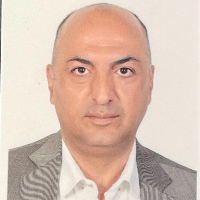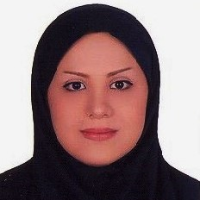Development of Economic Resource Acquisition System in Tehran Urban Management Based on Strategies of Competitive Advantage of Nations and Hybrid Fuzzy Multi-Criteria Decision-Making
In developing countries with inefficient economic systems and poor tax systems and without mechanisms of citizen participation in the supply of urban costs, the municipal revenue supply system will incline toward unsustainable income resources. Providing sustainable economic resources is one of the most critical challenges for urban management planners and policy-makers. Considering the importance of the role of Tehran metropolis in the urban and national economy, the present study is aimed to identify the complexity of the economic capital acquisition system based on the "competitive advantage of nations" model and with the participation of the Tehran urban management and investment decision-makers and also to identify the environmental determinant factors and extract the cause-effect relationships of the economic capital acquisition system to find the competitive strategies of the development of the economic resources acquisition system in Tehran urban management.
The present paper uses the hybrid fuzzy multi-criteria decision-making approaches, including the two-stage Delphi technique to identify the factors affecting the subsystems of the "competitive advantage of nations" model, the fuzzy AHP to perform the paired comparisons and prioritize the factors, the hybrid fuzzy DEMATEL and SNA (social network analysis) approaches to analyze the network and extract the applied causal relationships. The participants included 12 elites from among the chiefs of the investment offices of the 22 municipal districts of Tehran and the experts introduced by the International Relations & Affairs of Tehran Municipality, who were selected using the purposeful sampling method. The research problem was investigated and analyzed using the fuzzy structure, considering the ambiguity and complexity of the relationships and the available approximate information.
After the review of the literature on the economic capital acquisition in urban management, based on the "competitive advantage of nations" model, initially, four economic resource acquisition systems (production factors, demand conditions, strategy and structure, and supportive industries), the governmental factors, unpredicted events, and 15 subsystems were determined (Fig.1). In the first stage, a total of 97 factors were ranked and refined (filtered) based on the consensus of the elites and using the Likert scale. In the second stage of the Delphi technique, to provide an opportunity for self-revision and assessment of the opinions of others, we again referred to the elites and, subsequently, a total of 65 factors were finally agreed upon and approved based on the elites' consensus. Figure (2) illustrates the Pareto diagram of the identified influential factors. As can be seen in this figure, the production factors with 18 factors ranked first in terms of the factors affecting the economic resource acquisition and the strategy and structure with 17 factors ranked next to it. Figure 1- Economic resource acquisition factors system based on the "competitive advantage of nations" model (res: findings) Figure 2- Pareto diagram of factors affecting the economic resource acquisition based on the "competitive advantage of nations" (res: findings) The assessment of the effectiveness of the systems showed that the external factors, including the government that is out of the control of the capital acquisition system in urban management, had the highest effectiveness with a weight of 33.8%. Next to it, the competition structure and strategy, with a weight of 33%, were the most influential factors in the capital acquisition in Tehran. Subsequently, the factors of production with a weight of 16.8%, the supportive industries related to urban management with a weight of 8.4%, and domestic demand for urban services in Tehran with a weight of 9% exhibited the lowest effectiveness. By investigating the system and subsystems of the model, it can be concluded that although the elites believed that the factors, which were out of the authority of the urban managers, were among the most critical factors affecting capital acquisition, the role of urban managers is the most important influential factor in those areas that are within the authority of the urban managers. In the next stage, in order to find the key factors, considering the results of paired comparisons of the factors, a total of 30 critical priorities, including 32 influential factors, were selected. Afterward, the 32 identified factors were analyzed using the DEMATEL and SNA approaches to extract the cause-effect relationships and extract the network relationships. Subsequently, to depict the relationship network and analyze the relationships between the factors, the total effect matrix was analyzed with a threshold bound in UCINET software based on the degree centrality index, and betweenness centrality index and, thereby, the relationship network was drawn using NETDRAW software. Figure (3) illustrates the cause-effect relationships of the factors affecting the financial resource acquisition in the Tehran metropolis based on the degree centrality index.Figure 3- Relationship network of the factors affecting the economic resource acquisition based on the degree centrality index (res: findings) (the magnitude of the nodes has been set based on the magnitude of the degree centrality)Based on the results of the SNA analysis, using the available expert human forces (P12), the agreement or opposition of the country's political position with the capital acquisition (S23), the probability of the occurrence of war and chaos (O16), and the urban infrastructures in the investment areas (P53) were identified as the causal factors in the network. In addition, the factors of the capital acquisition strategies (S12), the participation of the domestic companies in invested industries (I22), the supply of capital through accessible facilities in specialized industries (P23), the supply of capital through the stock market and OTC facilities for investors (P22), the structure of the demand sector with regard to the needs of the real-person citizens and legal entities of the city (D31) were determined as the most effectible factors. Furthermore, apropos of the factors with a high betweenness centrality, the factors of the capital acquisition strategies (S12), the regional knowledge for foreign investors (P42), the participation of domestic companies in the invested industries (I22), the decision-maker headquarters' convergence and consensus on the spatial marketing strategies (O22), and the innovation in the urban management services-related supplier industries (I12) were identified as the key factors that played a crucial role in the competitive advantage and capital acquisition.
Considering the results of the present study on the development of the economic resources acquisition system based on the "competitive advantage of nations" model in Tehran urban management, the following recommendations are presented by the authors:Developing the government's collaboration with the municipality in the acquisition of investment opportunities in urban management; Coordinating the governmental position and policies with the investment acquisition and applying incentive policies for the private sector and attracting foreign investors; Maintaining security and stability to reduce the risk of war and increase the attractiveness of urban investment; Planning for the development of the infrastructures required for the acquisition of investments in urban services; Supplying the required capital through specialized industrial facilities and capital market facilities and the participation of the companies working in the field of the opportunities of investment of different industries in urban services; Using specialized human forces for the acquisition of investment opportunities in urban management; Compiling the capital acquisition strategies in urban services in an integrated form through strategic planning of urban management; Developing the regional knowledge and accessible specialized data on the investment opportunities in urban management; The convergence and consensus of the decision-maker headquarters on the spatial marketing strategies and urban branding;
Providing the ground for innovations in the urban management services-related supplier industries.
-
Improving the System of Urban Development Plan by Formulating the Mess and Using Soft Systems Methodology
Marzieh Samadi-Foroushani, Amir Shahrabi Farahani, Soheil Kousari, Mohammadjavad Keyhanpour, Ali Nasiri *
Journal of Systems Thinking in Practice, Summer 2024 -
Dynamic analysis of sustainable development system of deprived regions of Iran
Alireza Alinezhad *, Ali Mohammad Ahmadvand,
Journal of Strategic Management Studies, -
Prediction of Customer Satisfaction level in after-sales service in automotive industry- Dealers in Saipayadak Co.
Reyhaneh Varasteh, *
Journal of Future Studies Management, -
Pricing of build-operate-transfer and public-private partnership projects under risk
Adel Hambashi, *, Roya Soltani
Financial Knowledge of Securities Analysis,




